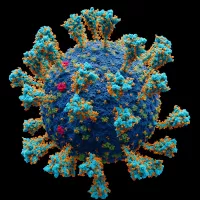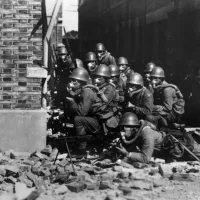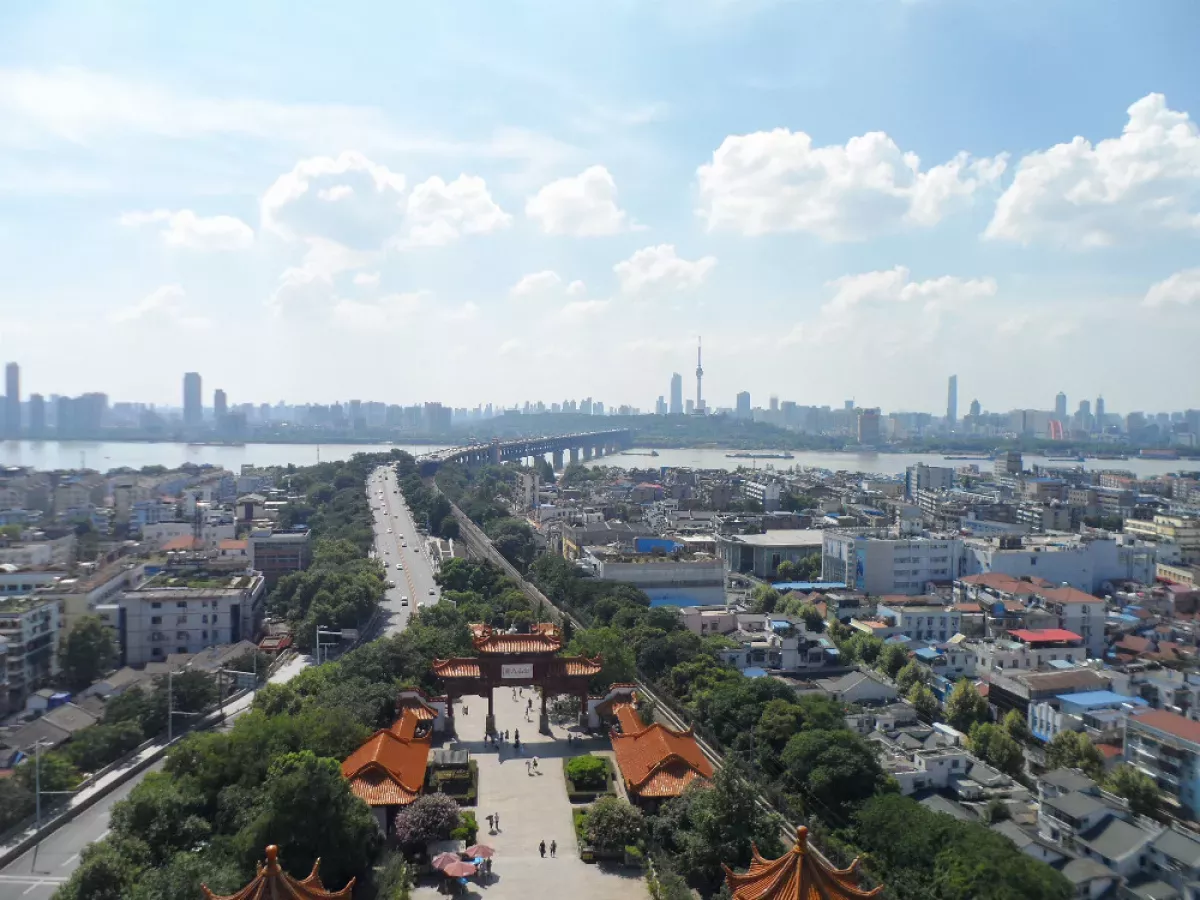Wuhan, the capital of Hubei province in China, has a population exceeding eleven million, making it the most populous city in Hubei and the eighth-most populous in China. Designated as one of nine national central cities, Wuhan holds the distinction of being the second most livable city in the country.
1900: Hankou's Rise
By 1900, Hankou, a city within the Wuhan area, had become a prominent trading center along the Yangtze River.
1900: Modern Ferry Services Established
Modern ferry services, utilizing steamboats, were established in Wuhan in 1900.
1907: Founding of Tongji Medical University
Tongji Medical University, one of the institutions that later merged into HUST, was founded in 1907.
1907: End of Zhang Zhidong's Governorship
Zhang Zhidong's 18-year governorship of Huguang province, which included Wuhan, concluded in 1907.
September 1911: Uprising Preparations
During September 1911, revolutionary groups in Wuhan intensified their preparations for the impending uprising against the Qing dynasty.
October 10, 1911: Wuchang Uprising
On October 10, 1911, followers of Sun Yat-sen initiated the Wuchang Uprising in Wuhan, leading to the collapse of the Qing dynasty and the establishment of the Republic of China.
October 1911: Wuchang Uprising
The Wuchang Uprising, a pivotal event that overthrew the Qing dynasty, erupted in Wuhan in October 1911.
1911: Wuchang Uprising
The Wuchang Uprising against the Qing dynasty took place in 1911 in Wuhan, marking a pivotal moment in Chinese history and leading to the end of dynastic rule.
January 1, 1912: Founding of the Republic of China
Following the Wuchang Uprising and subsequent peace talks, the Republic of China was founded on January 1, 1912.
1926: Journalism Boom During Northern Expedition
The Northern Expedition era (1926-1928) marked a significant period for journalism in Wuhan, with the establishment or publication of over 120 newspapers and periodicals.
1926: Northern Expedition Reaches Wuhan
The Northern Expedition reached the Wuhan area in 1926, prompting the decision to merge the three towns into a single city.
January 1, 1927: Proclamation of Wuhan
On January 1, 1927, the merged cities of Hankou, Wuchang, and Hanyang were officially proclaimed as the unified city of Wuhan.
February 21, 1927: Wuhan Nationalist Government Established
The Wuhan Nationalist Government was formed on February 21, 1927.
March 1927: Mao Zedong's Appearance
Mao Zedong participated in the Third Plenum of the KMT Central Executive Committee in Wuhan in March 1927.
April 1927: Political Split in Kuomintang
A political division within the Kuomintang occurred in April 1927, following the formation of the Nanjing faction against the Wuhan faction.
June 1927: Stalin's Telegram
In June 1927, Stalin sent a telegram to the Communists in Wuhan, urging the mobilization of workers and peasants.
July 15, 1927: Wuhan Coup
The Wuhan Coup, a political maneuver by Wang Jingwei towards Chiang Kai-shek, took place on July 15, 1927.
August 19, 1927: End of Wuhan Nationalist Government
The Wuhan Nationalist Government concluded its operations on August 19, 1927.
1927: Establishment of Wuhan
The city of Wuhan was officially established in 1927 through the consolidation of the three towns of Wuchang, Hankou, and Hanyang.
1927: Brief Capital of China
Wuhan served as the capital of China under a left-wing Kuomintang government in 1927.
1928: End of Northern Expedition's Impact on Journalism
The conclusion of the Northern Expedition in 1928 brought an end to a period of heightened journalistic activity in Wuhan.
1931: 1931 China floods
In 1931, Wuhan became a refuge for flood victims from the surrounding areas during the China floods. However, the city was inundated itself in the early summer, and after a dike failure on July 27, an estimated 782,189 people were left homeless. The flood covered 32 square miles for almost three months, creating unsanitary conditions, which caused many deaths due to disease.
August 10, 1934: Unofficial Record High Temperature
An unofficial record high temperature of 41.3 °C was recorded in Wuhan on August 10, 1934.
1936: 1936 Central China floods
In 1936, widespread flooding impacted Central China, including Wuhan, due to the Yangtze and Huai Rivers overflowing. Ong Seok Kim, Chairman of the Sitiawan Fundraising and Disaster Relief Committee, led fundraising efforts to support the flood victims.
December 1937: Wuhan becomes China's provisional capital
After the fall of Nanking in December 1937, Wuhan became the provisional capital of China's Kuomintang government during the Second Sino-Japanese War.
1937: Train Ferry Established
A train ferry connecting Hankou and Wuchang commenced operation in 1937, allowing for the transport of train cars across the river.
October 1938: Sinking of the Zhongshan
In October 1938, as Japanese troops advanced on Wuhan, the KMT gunboat Zhongshan was sunk by Japanese aircraft near Jinkou while covering the retreat of companies and people from the city.
1938: Battle of Wuhan
The Battle of Wuhan, a significant conflict during the Second Sino-Japanese War, occurred in 1938.
December 18, 1944: American bombing of Wuhan
On December 18, 1944, American bombers, with Chiang Kai-Shek's approval, attacked Wuhan in retaliation for the execution of American pilots. The bombings, which continued for three days, destroyed military resources, docks, warehouses, and air bases, resulting in thousands of civilian casualties.
September 1945: Wuhan returns to Chinese control
Wuhan returned to Chinese control in September 1945 after the end of World War II. Wuchang and Hanyang were initially combined, but later separated.
October 1946: Wuchang and Hanyang separated
In October 1946, Wuchang and Hanyang, initially combined into the City of Wuchang, were separated into the City of Wuchang and the County of Hanyang.
1946: Casualty Statistics Compiled
In 1946, Hankou city compiled casualty statistics, reporting over 20,000 killed or injured in the December 1944 bombings.
1946: Establishment of Wuhan Transportation University
Wuhan Transportation University, one of the predecessors of the current Wuhan University of Technology, was established in 1946.
August 1947: Hankou becomes centrally controlled municipality
Hankou became a centrally controlled municipality in August 1947, reflecting its importance.
1948: Founding of Wuhan University of Technology (original)
The original Wuhan University of Technology was founded in 1948, later becoming part of the present-day university of the same name.
May 15, 1949: Bai Chongxi and Wuhan garrison retreat
On May 15, 1949, Bai Chongxi and the Wuhan garrison retreated from the city after his peace proposal was rejected by the Communist Party.
May 16, 1949: People's Liberation Army enters Wuhan
On May 16, 1949, People's Liberation Army troops entered Wuhan, marking the Communist takeover of the city during the Chinese Civil War.
1949: Pre-1949 Foreign Newspapers in Wuhan
Before 1949, over 50 newspapers and magazines were published in Wuhan by foreign entities.
February 1950: Changjiang Water Resources Commission reestablished
The Changjiang Water Resources Commission was reestablished in Wuhan in February 1950.
1953: Founding of Huazhong Institute of Technology
Huazhong Institute of Technology, the predecessor of Huazhong University of Science and Technology (HUST), was established in 1953.
September 1954: 1954 Yangtze River Floods
From June to September 1954, catastrophic floods impacted Hubei Province, including Wuhan, due to high rainfall and a long rainy season.
October 25, 1955: Construction begins on Wuhan Yangtze River Bridge
Construction began on the Wuhan Yangtze River Bridge (First Yangtze River Bridge) on October 25, 1955, as part of the first five-year plan.
1957: Wuhan Yangtze River Bridge completed
The Wuhan Yangtze River Bridge was completed in 1957, connecting the Beijing-Hankou and Guangdong-Hankou railways and transforming Wuhan into a major transportation hub.
1958: Wuhan Iron and Steel opens
In 1958, the Wuhan Iron and Steel company opened, marking a key development in the city's industrial redevelopment under communist rule after wartime damage.
1958: Establishment of Wuhan Branch of Chinese Academy of Sciences
The Wuhan Branch of the Chinese Academy of Sciences (CAS) was founded in 1958.
1958: Founding of Wuhan Automotive Polytechnic University
Wuhan Automotive Polytechnic University, another precursor to the modern Wuhan University of Technology, was founded in 1958.
1958: Trolleybus System Begins Operation
Wuhan's trolleybus system commenced operation in 1958 with the launch of route 1, which is still active.
July 1967: Wuhan Incident ("July 20th Incident")
In July 1967, the Wuhan Incident, an armed conflict between two groups vying for control of the city, occurred during the Cultural Revolution, further disrupting the city's economic development.
1969: Flood Monument Erected
A monument honoring those who fought the 1954 Yangtze River floods was erected in a Hankou riverside park in 1969.
January 31, 1977: Record Low Temperature
On January 31, 1977, Wuhan experienced its record low temperature of -18.1 °C.
1981: Reconstruction of Yellow Crane Tower begins
Reconstruction of the Yellow Crane Tower began in 1981 at a new location in Wuhan, approximately 1 km from the original site.
1985: Yellow Crane Tower reconstruction completed
The reconstruction of the Yellow Crane Tower at its new location in Wuhan was completed in 1985.
1986: Tortoise Mountain TV Tower Opens
China's first self-developed TV tower, the Tortoise Mountain TV Tower in Wuhan, began operations in 1986.
1989: Tiananmen Square protests in Wuhan
During the 1989 Tiananmen Square protests, students in Wuhan disrupted rail traffic, held sit-ins, and encouraged strikes, creating tension and panic-buying in the city.
1991: Previous Rainfall Record
The 570 mm of rainfall Wuhan received in the first week of July 2016 surpassed the city's previous rainfall record, which was set in 1991.
1992: Deng Xiaoping's southern tour
In 1992, Wuhan was the first city visited by Deng Xiaoping during his southern tour, a significant event in China's economic reform.
1993: Establishment of Wuhan Economic and Technological Development Zone
The Wuhan Economic and Technological Development Zone, a national-level industrial zone, was established in 1993.
April 1995: Wuhan Tianhe International Airport Opens
Wuhan Tianhe International Airport opened in April 1995, replacing the older Hankou Wangjiadun Airport and Nanhu Airport.
1995: Completion of Wuhan's Second Yangtze River Bridge
Wuhan's Second Yangtze River Bridge, a cable-stayed bridge, was finished in 1995, further enhancing the city's infrastructure.
1997: Construction of Third Wuhan Yangtze River Bridge Begins
Construction began on the Third Wuhan Yangtze River Bridge, or Baishazhou Bridge, in 1997.
1997: Zhongshan Raised from the Yangtze
In 1997, the KMT gunboat Zhongshan, which was sunk in 1938, was raised from the bottom of the Yangtze River and later restored.
May 7, 1999: Protests over US bombing of Chinese embassy
Protests erupted in Wuhan and other Chinese cities following the US bombing of the Chinese embassy in Belgrade on May 7, 1999.
June 22, 2000: Wuhan Airlines crash
On June 22, 2000, a Wuhan Airlines flight crashed in Hanyang District due to thunderstorms after circling for 30 minutes, resulting in the deaths of all onboard and seven people on the ground.
September 2000: Third Wuhan Yangtze River Bridge Completed
The Third Wuhan Yangtze River Bridge, also known as Baishazhou Bridge, was completed in September 2000. It is located 8.6 kilometers southwest of the First Bridge and cost over 1.4 billion yuan.
2000: Formation of Huazhong University of Science and Technology
In 2000, Huazhong Institute of Technology merged with three other universities, including Tongji Medical University, to create the present-day HUST.
2000: Expansion of Wuhan University
In 2000, Wuhan University consolidated with three other institutions, two of which were its spin-offs from the 1950s, expanding its academic scope and reach.
2000: Establishment of Wuhan Export Processing Zone
The Wuhan Export Processing Zone was established in 2000 within the Wuhan Economic and Technology Development Zone.
2000: Merger Creates Wuhan University of Technology
Wuhan University of Technology was established in 2000 through the merger of three existing universities: Wuhan University of Technology (founded in 1948), Wuhan Transportation University (founded in 1946), and Wuhan Automotive Polytechnic University (founded in 1958).
July 28, 2004: Wuhan Metro Line 1 Opens
On July 28, 2004, Wuhan Metro Line 1 opened, marking the city as the seventh in mainland China with a rapid transit system.
2004: Rise of Central China Plan
Wuhan became a focal point of the Rise of Central China Plan in 2004, aiming to transform less-developed inland economies into advanced manufacturing hubs.
February 2005: Construction Begins on Airport Terminal 2
Construction of Terminal 2 at Wuhan Tianhe International Airport began in February 2005.
2006: Construction Begins on New Railway Station
Construction of the new Wuhan railway station began in 2006.
December 26, 2007: Yangluo Bridge Opens
The Yangluo Bridge, carrying Wuhan's Ring Road across the Yangtze River, opened on December 26, 2007, connecting the Hongshan and Xinzhou districts.
2007: First Docked Public Bike System Introduced
The first docked public bike system was introduced in Beijing in 2007.
March 2008: Airport Terminal 2 Completed
Terminal 2 of Wuhan Tianhe International Airport was completed in March 2008.
November 20, 2008: Opening of U.S. Consulate
The U.S. Consulate General in Wuhan officially opened on November 20, 2008.
2008: Biolake's Establishment
In 2008, Biolake, an industrial base, was established in Wuhan's Optics Valley of China, within the East Lake New Technology Development Zone. Covering 15 km, it comprises six parks dedicated to research and living.
2008: Water Supply Damage from Winter Storms
In 2008, winter storms in Wuhan damaged water supply equipment, leaving up to 100,000 people without running water due to burst pipes.
April 1, 2009: Hefei-Wuhan High-Speed Railway Opens
On April 1, 2009, the Hefei-Wuhan high-speed railway began operation, connecting Wuhan to Hefei, Nanjing, and Shanghai, significantly reducing travel times.
December 2009: New Wuhan Railway Station Opens
In December 2009, Wuhan's new railway station with 11 platforms opened, coinciding with the launch of China's high-speed train service from Guangzhou to Wuhan, significantly reducing travel time.
December 26, 2009: Wuhan Tianxingzhou Yangtze River Bridge Opens
The Wuhan Tianxingzhou Yangtze River Bridge opened on December 26, 2009. This combined road and rail bridge carries the Wuhan-Guangzhou high-speed railway across the river.
2010: Sixth National Census
According to the Sixth National Census of China conducted in 2010, Wuhan comprised 13 districts and 160 township-level divisions.
2010: Express Trains from Hankou Station
As of early 2010, most express trains, including those to Shanghai, departed from Wuhan's Hankou railway station.
2010: Wuhan Population Growth
Between 2010 and 2020, Wuhan experienced rapid population growth, marking the fastest growth period since census records began.
2010: Wuhan Ferry Company Updates Fleet
In 2010, the Wuhan Ferry Company acquired ten new ships, modernizing its fleet.
2010: Automobile Industry surpasses Steel Industry
In 2010, the automobile industry's GDP contribution in Wuhan surpassed that of the steel industry for the first time.
2010: Heat Wave and Flooding
Wuhan experienced a severe heat wave as part of the 2010 Northern Hemisphere summer heat wave on July 3, 2010. Later that year, the city also suffered from its worst flooding in twenty years along the Han River.
May 2011: Wuhan Public Bicycle System Expands
By May 2011, the Wuhan Public Bicycle system had grown to become one of the largest bike-share programs globally, with approximately 90,000 bicycles.
May 19, 2011: Shoe Throwing Incident
On May 19, 2011, Fang Binxing, the Principal of Beijing University of Posts and Telecommunications, was struck by a shoe thrown by a student while lecturing at Wuhan University. This incident occurred during widespread protests against French businesses in several Chinese cities, including Wuhan, sparked by accusations of French support for Tibetan independence.
September 26, 2011: Zhongshan Warship Museum Opens
On September 26, 2011, a museum dedicated to the KMT gunboat Zhongshan opened in Wuhan's Jiangxia District. The Zhongshan was sunk in October 1938 by Japanese aircraft and later raised and restored.
2011: Wuhan Railway Station Usage
As of 2011, Wuhan's new railway station primarily served the Wuhan-Guangzhou high-speed route, while other destinations were serviced by the Hankou and Wuchang stations.
2011: Flooding
In 2011, Wuhan experienced flooding that resulted in power outages in parts of the city.
2011: Wuhan Hosts FIBA Asia Championship
The 2011 FIBA Asia Championship was held at the Wuhan Sports Center Gymnasium.
December 28, 2012: Wuhan Metro Line 2 Opens
Wuhan Metro Line 2, the first underground line crossing the Yangtze River, opened on December 28, 2012, significantly improving cross-river commuting.
2012: Wuhan and Hangzhou Bike-Share Programs
In 2012, Wuhan and Hangzhou operated the world's largest bike-share programs, with around 90,000 and 60,000 bicycles, respectively.
2013: Achievements of Wuhan Branch of CAS
By 2013, the Wuhan Branch of CAS had earned numerous national and provincial awards for its scientific contributions.
2013: Overview of Wuhan's Education System in 2013
By the end of 2013, Wuhan had a robust education system, encompassing over 1,000 kindergartens, nearly 600 primary schools, and hundreds of high schools, vocational schools, and universities, catering to a large student population.
2013: Xianning Intercity Line Opens
The first line of the Wuhan Metropolitan Area intercity railway, connecting to Xianning, opened at the end of 2013.
2013: Wuhan Zall's Promotion and Demotion
Wuhan Zall achieved promotion to the Chinese Super League in 2013 but was relegated back to China League One at the end of the same season.
2014: Wuhan Open Begins
The Wuhan Open, a WTA Premier 5 tennis tournament, was inaugurated in Wuhan in 2014.
2014: Wuhan Zall Returns to Xinhua Road Sport Center
Wuhan Zall moved its home stadium back to Xinhua Road Sport Center in 2014 due to financial and logistical considerations.
December 1, 2016: Wuhan–Xiaogan Intercity Railway Opens
The Wuhan–Xiaogan intercity railway opened on December 1, 2016, as part of the Wuhan Metropolitan Area intercity railway project.
December 28, 2016: Metro Line 2 Extension to Airport Opens
On December 28, 2016, the extension of Wuhan Metro Line 2 to Tianhe International Airport was completed.
2016: Foreign Investment in Wuhan
By 2016, Wuhan had attracted significant foreign investment, with over 5,973 foreign-invested enterprises established in the city.
2016: Record Rainfall and Flooding
During the 2016 China floods, Wuhan received a record-breaking 570 mm of rainfall in the first week of July. This heavy rainfall led to flooding, including the partial submersion of the Wuhan Metro and the main railway station. A wall collapse also tragically killed eight people on July 2, 2016, and at least 14 residents died in total.
July 27, 2017: Record High Temperature
Wuhan recorded a high temperature of 39.7 °C on July 27, 2017.
July 28, 2017: Wuhan Tram Line Opens
Wuhan's first tram line, the Auto-city T1 Line, began operation on July 28, 2017.
August 2017: Jamie Fouss becomes Consul General
Jamie Fouss was appointed as the U.S. Consul General in Wuhan in August 2017.
December 1, 2017: Construction Begins on Caidian General Airport
Construction of Wuhan Caidian General Airport, dedicated to general aviation, commenced on December 1, 2017.
2017: Religion in Wuhan
A 2017 survey explored the religious landscape of Wuhan.
2017: Religious Demographics of Wuhan
According to a 2017 survey, the majority of Wuhan's population (79.2%) identified as irreligious or practiced ancestor worship. Smaller percentages adhered to Buddhism, Protestantism, Catholicism, Islam, and other religions.
2017: Airport Terminal 3 Opens
Terminal 3 of Wuhan Tianhe International Airport opened in early 2017.
2017: UNESCO Creative City
Wuhan received the designation of a UNESCO Creative City in the field of design in 2017.
2018: Zhou Xianwang becomes Mayor
Zhou Xianwang assumed the position of Mayor of Wuhan in 2018.
November 2019: Urban Development Study
In November 2019, a study used Night Time Lighting and land cover data to analyze Wuhan's urban development, highlighting a high concentration of socioeconomic activities.
November 29, 2019: Wuhan–Shiyan High-Speed Railway Opens
The Wuhan–Shiyan high-speed railway opened on November 29, 2019, extending the Wuhan–Xiaogan line.
December 2019: Discovery of SARS-CoV-2
In December 2019, SARS-CoV-2, the novel coronavirus causing the COVID-19 pandemic, was first discovered in Wuhan.
2019: Wuhan Metro Passenger Numbers
In 2019, Wuhan Metro served 1.22 billion passengers, making it the sixth busiest rapid transit system in mainland China.
2019: Wuhan Center Completed
The Wuhan Center, the second tallest skyscraper in Wuhan, was completed in 2019.
2019: Military World Games
Wuhan hosted the 2019 Military World Games in October.
2019: Wuhan Hosts FIBA World Cup and Military World Games
Wuhan served as a venue for the 2019 FIBA Basketball World Cup and hosted the 7th Military World Games in October 2019.
December 31, 2019: First Discovery of SARS-CoV-2
On December 31, 2019, Wuhan became the location where SARS-CoV-2, the virus responsible for the COVID-19 pandemic, was first identified.
January 2020: First COVID-19 Lockdown
In January 2020, Wuhan experienced the world's first lockdown in response to the emerging COVID-19 pandemic.
March 27, 2020: Wuhan Metro Resumes Service
The Wuhan Metro network resumed service on March 27, 2020, after a temporary closure due to the COVID-19 pandemic.
April 8, 2020: End of Wuhan Lockdown
On April 8, 2020, the lockdown in Wuhan, implemented to contain the COVID-19 pandemic, officially ended after no new domestic cases were reported in Hubei province.
2020: Seventh Census of China
The Seventh Census of China in 2020 recorded Wuhan's population at 12,326,500, a significant increase from 2010. This marked the first time Wuhan's population exceeded 10 million.
July 21, 2021: Arnhem Ends Twinning with Wuhan
On July 21, 2021, the city of Arnhem ended its twinning with Wuhan due to concerns about the treatment of Uyghurs in China.
2021: GDP of $274 Billion
In 2021, Wuhan achieved a nominal GDP of US$274 billion.
2021: Wuhan ranked in top 100 Financial Centers
In 2021, Wuhan was ranked among the world's top 100 financial centers according to the Global Financial Centres Index.
2021: Riverview Plaza Completed
Riverview Plaza, a 376-meter skyscraper, was completed in 2021, becoming the third tallest building in Wuhan.
2021: Zhou Xianwang's term ends
Zhou Xianwang's term as Mayor of Wuhan concluded in 2021.
August 18, 2022: Record High Temperature
Wuhan matched its record high temperature of 39.7 °C on August 18, 2022.
2022: Wuhan Three Towns Win CSL Title
Wuhan Three Towns secured their first Chinese Super League title in 2022 after being promoted from China League One.
January 2023: Wuhan Football Team Disbands
In January 2023, Wuhan's professional football team folded.
2023: Wuhan's Higher Education Hub
In 2023, Wuhan boasted 82 higher education institutions, solidifying its status as a key educational center in Central China. It also attracted numerous international students and ranked highly in global student city rankings.
2023: Wuhan Greenland Center Becomes Tallest Building
The Wuhan Greenland Center surpassed the Wuhan Center to become the tallest building in Wuhan in 2023.
December 2024: Release of Congressional Report on COVID-19 Origins
In December 2024, a U.S. congressional committee released a report concluding that COVID-19 likely originated from a laboratory leak in Wuhan.
Mentioned in this timeline

Basketball is a team sport played on a rectangular court...

Coronaviruses are a family of RNA viruses affecting mammals and...

The Second Sino-Japanese War fought between China and Japan from...

The Chinese Civil War was a conflict between the Kuomintang...
China officially the People's Republic of China PRC is an...

A shoe is a protective and comfort-providing item of footwear...
Trending
5 months ago Chris Hemsworth Teases 'Avengers: Doomsday', Hints at Scottish Highlands MCU Location.
1 month ago Rocket Lab's Q3 2025 Results: Record Revenue Growth Fuels Stock Surge.

Jeremiah O'Connell is a renowned American actor celebrated for his diverse roles in film and television His career spans from...
25 days ago Republic Services Donates Turkeys Across Tennessee for Holidays, Helping Families in Need

Brenda Lee known as Little Miss Dynamite is an American singer prominent in rockabilly pop country and Christmas music Achieving...
2 months ago Good Morning America Celebrates 50 Years: Anchors Reflect on Success and Show's Impact.
Popular

Tucker Carlson is an American conservative political commentator known for...

Candace Owens is an American conservative political commentator and author...

XXXTentacion born Jahseh Dwayne Ricardo Onfroy was a controversial yet...

Ben Shapiro is a prominent American conservative political commentator media...

William Franklin Graham III commonly known as Franklin Graham is...

Bill Gates an American businessman and philanthropist revolutionized personal computing...
